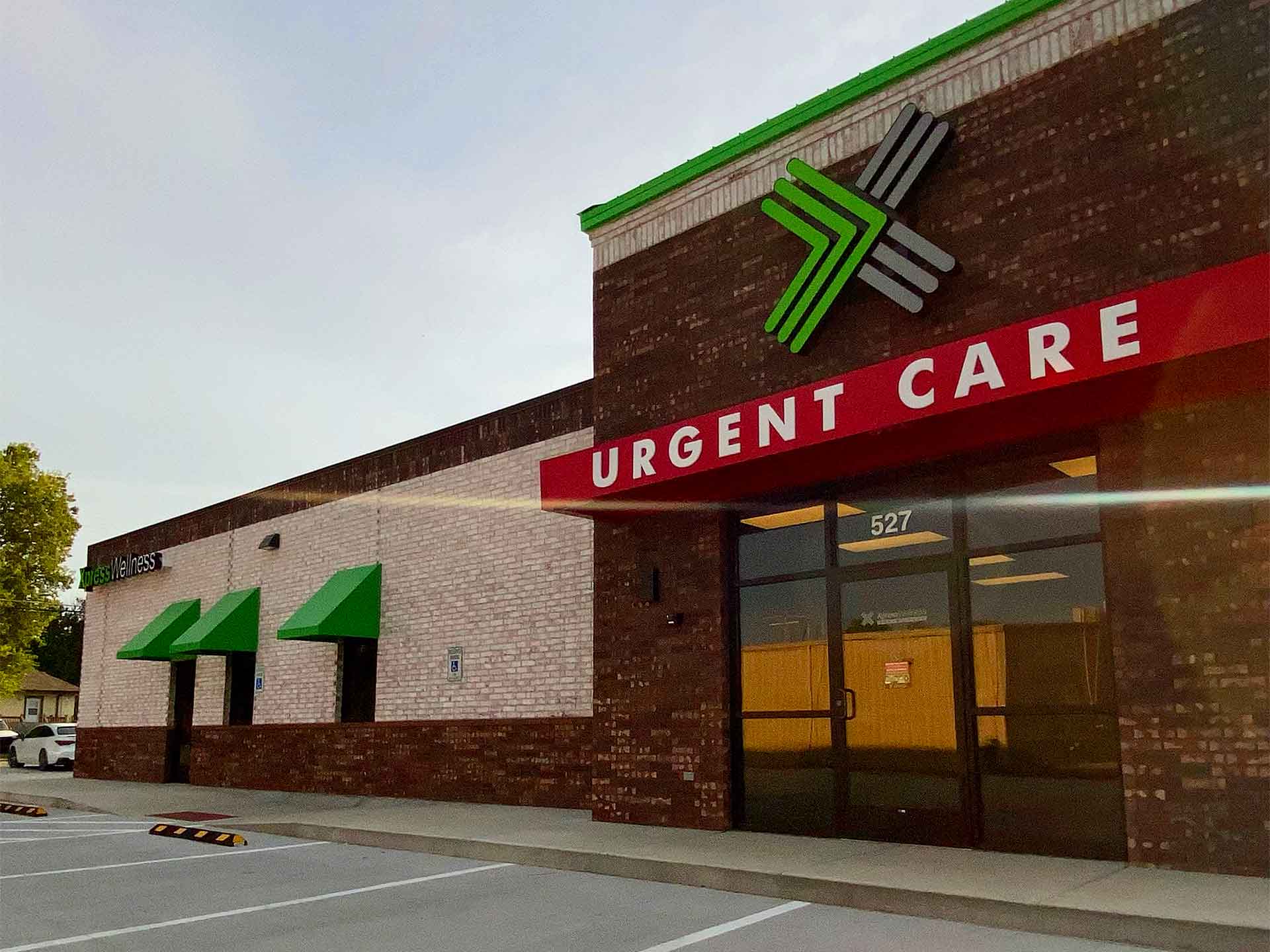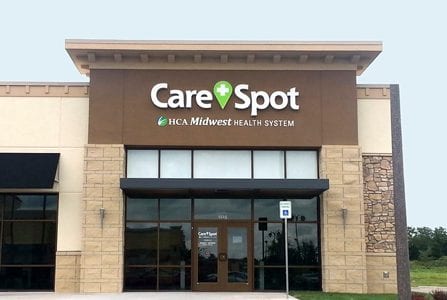The Value of Urgent Care Centers in Bridging the Space In Between Primary Care and Emergency Situation Services
Immediate treatment centers have actually arised as an important component of the healthcare landscape, successfully dealing with the crucial requirement for prompt medical attention without considering emergency services. By offering look after non-life-threatening conditions, these facilities help to reduce the problem on emergency clinic and improve patient access to timely therapy. Their extended hours and varied solutions provide to an expanding population seeking alternatives to conventional medical care. The advancing duty of urgent care centers increases important inquiries about their combination within the more comprehensive health care system and the ramifications for person outcomes and resource appropriation.
Summary of Urgent Care Centers
Immediate treatment facilities have become a necessary element of the healthcare shipment system, offering available clinical services for non-life-threatening problems. These centers usually operate outside conventional office hours, offering people an option to emergency situation spaces and medical care setups. Individuals looking for immediate treatment commonly present with problems such as minor injuries, infections, or illnesses that need prompt interest but do not present a prompt risk to life or arm or leg.
Immediate care centers are staffed by a series of health care specialists, consisting of physicians, nurse specialists, and physician aides, who are furnished to diagnose and deal with various medical concerns. They commonly include diagnostic devices such as X-ray devices and research laboratory solutions, enabling them to give extensive treatment on-site.
The facility of immediate care centers has been influenced by the boosting need for prompt clinical services in a hectic culture, where people might have a hard time to protect appointments with health care carriers. Consequently, these facilities aim to relieve congestion in emergency divisions, improving overall healthcare efficiency. Furthermore, urgent care centers commonly act as a bridge in between key treatment and emergency services, guaranteeing that individuals get appropriate care customized to their details clinical demands.

Benefits of Urgent Care Solutions
Accessing prompt healthcare is a significant benefit of immediate treatment services. These facilities give immediate attention for non-life-threatening conditions, efficiently lowering wait times contrasted to conventional emergency divisions. Clients looking for take care of small injuries, illnesses, or urgent wellness issues can obtain treatment without the long delays commonly related to health center gos to.
One more trick benefit is the prolonged hours of procedure. Many immediate treatment facilities are open evenings and weekends, accommodating clients who may not be able to visit their health care company throughout common office hours. This adaptability makes immediate care an easily accessible option for those with hectic routines or unexpected health concerns.
Moreover, urgent treatment facilities frequently provide a large range of solutions, including diagnostic screening, X-rays, and standard research laboratory solutions. This comprehensive approach enables fast medical diagnosis and therapy, improving client contentment.
In addition, immediate care centers are commonly extra cost-efficient than emergency clinic, making them an appealing option for people without insurance coverage or those with high-deductible plans. In general, immediate care solutions play a vital function in offering accessible, prompt, and economical treatment.
Comparison With Health Care
Commonly, people typically weigh their choices between immediate care centers and health care suppliers when seeking clinical attention. Both offer vital duties in the healthcare system, yet they vary significantly in accessibility, price, and range.
Medical care service providers are commonly the first point of call for people, concentrating on long-lasting wellness monitoring, precautionary treatment, and persistent illness monitoring. They offer continuity of care, fostering a patient-provider partnership that enables comprehensive health and wellness evaluations and personalized treatment plans. However, arranging a visit can be lengthy, often needing days or weeks beforehand.
On the other hand, urgent care centers supply instant care for non-life-threatening conditions that need timely attention, such as minor injuries or infections. These centers frequently operate beyond typical office hours, accommodating people who may not be able to visit their key treatment provider during regular business times. In addition, immediate care is generally more cost-efficient than emergency room sees, making it an appealing alternative for those with minimal health care access.
Inevitably, while immediate care facilities and key treatment companies both add to client health, they satisfy unique requirements, making it vital for clients to identify which choice best straightens with their circumstances.
Emergency Solutions Communication
The interaction between immediate care facilities and emergency services is a vital facet of the health care landscape, particularly when clients face circumstances that may intensify in extent. Immediate treatment centers act as a bridge in between medical care and emergency situation departments, addressing non-life-threatening problems that call for immediate attention. This collaboration improves patient outcomes and enhances resource allowance within the medical care system.
When people offer with immediate yet not serious issues, urgent treatment centers can effectively handle their demands, minimizing congestion in emergency spaces. Facilities outfitted with diagnostic abilities can assist in prompt references to emergency services when an individual's problem goes beyond the scope of immediate care treatment. This seamless communication assists make certain that people get the appropriate degree of treatment without unneeded delays.
Moreover, efficient interaction in between immediate treatment companies and click this emergency situation services is vital. Sharing client information and therapy backgrounds cultivates worked with treatment, reducing the danger of redundant tests and treatments. As medical care continues to evolve, the vibrant partnership between urgent treatment facilities and emergency services will certainly play a pivotal function in boosting patient treatment effectiveness, fulfillment, and general wellness results within the community.
Future of Urgent Treatment Facilities
As health care demands evolve, the future of immediate care facilities is poised to come to be progressively integral to the total clinical community (Urgent Care). These facilities are likely to increase their functions by integrating advanced modern technologies, such as telemedicine, synthetic intelligence, and electronic wellness record combination. This will certainly boost client accessibility and improve care sychronisation in between urgent treatment, health care, and emergency situation services
Additionally, immediate treatment centers are expected to diversify their solution offerings to consist of precautionary treatment and chronic illness administration. This change will certainly position them as important elements in handling population health and wellness, lowering the worry on emergency divisions, and dealing with spaces in medical care schedule.
The expanding fad of value-based treatment will certainly even more speed up the improvement look at here of immediate care centers, motivating them to concentrate on person end results and fulfillment. Facilities may also take on joint method models, functioning very closely with professionals and medical care companies to make certain detailed person monitoring.
Final Thought
In final thought, urgent treatment facilities serve a crucial feature in the medical care system by offering prompt access to therapy for non-life-threatening conditions, effectively reducing stress on emergency solutions. Their expanded hours and varied range of solutions enhance person ease and contentment, while likewise ensuring suitable treatment delivery. As healthcare requires remain to advance, the duty of urgent care centers will hop over to here likely end up being increasingly considerable, more linking the space in between key care and emergency situation solutions.
The facility of urgent care facilities has actually been influenced by the boosting need for timely clinical services in a hectic culture, where people may battle to secure visits with key care service providers. In addition, immediate treatment centers typically offer as a bridge between main treatment and emergency services, making certain that patients receive ideal care tailored to their particular medical demands.
Numerous immediate care centers are open evenings and weekends, fitting individuals who might not be able to see their key treatment supplier throughout common workplace hours (Urgent Care). As medical care proceeds to advance, the dynamic relationship between immediate care centers and emergency solutions will certainly play a crucial duty in boosting person treatment efficiency, contentment, and total wellness results within the neighborhood
